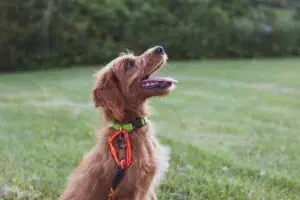Are you tired with your pet that recognizes only 3 commands? Do not worry, my friend! You can possibly utilize a little jazz. Particular command words are not that difficult as well as essential. The important things right here must be the uniformity of its usage. My friend, Wiki, right here can give you a bit of a blast. Some of these certain commands are approved as standard, while others are typically utilized.

Here is a listing you might locate quite intriguing:
Let us start with the basic commands
1.) Sit– it is a mono-syllabic word that calls for a little a genuine tone that would require for your canine to be in a resting placement.
2.) Down– similar to # 1, this additionally calls for a sudden tone for the dog to be commonly down when its elbow joints (front feet) and also hocks (back legs) are touching the ground or flooring.
3.) Heel– The canine’s head or shoulder is parallel to the trainer’s leg on the left side of the handler
4.) Come or Here– (referred to as the recall) you just truly reached call your canine which relates the entire command.
5.) Stay– an additional command that needs an additional breeze for the pet dog to continue to be in the sitting setting (sit, down, stand), and area under which the command was provided up until it is released by the trainer.
Those were just a few of the standard ones, yet wait! Below is something for those that are too hungry to really stop. The advanced commands are the following (which might need much more patience as well as commitment):.
1.) Stop– Wiki claims that the dog regulated will simply stop whatever it is doing, and also relax on command despite exactly how much it is from its keeper is a pet that can be taken anywhere.
Some handlers utilize the German word PLATZ (related to area, i.e. remain in placement) for this activity. A bit demanding, but who knows when your canines requires it.
2.) Back up– caretakers of large pet dogs or pet dogs with online reputation (a need to price estimate!) for aggression can make unfamiliar people extra comfy by instructing the pet to back up on command.
This command might most likely be very helpful for authorities pet dogs.
3.) Growl– currently this is what you people must be discussing. In case you are harassed, this is the inverse of backing up.
Some owners show non-aggressive dogs to growl on a subtle command– not the word “growl”, just normally a little hand motion– as a means of letting complete strangers understand that you as well as your dog value being left alone.
4.) Steady– to maintain near by. The pet dog can stroll cost-free, yet not dash off. This can be extremely beneficial to sport canines, and/or during competitors.
5.) Stand– on this command, the pet dog stalls. Funny just how this is seems so advanced; it is extremely valuable for “grooming”. Several dogs are brushed frequently, that they need to stand quietly during the process.
You can additionally use this when you desire your pet dog to await you at the park, while lining up for a coffee at Starbucks 7 in the early morning.
6.) Go to bed, kennel, or enter– this command directs the pet to head to its bed, and continue to be there unreleased. This is in some way valuable to keep a dog out from underfoot, as well as safe in a busy or challenging scenario.
7.) Drop or Drop it– to launch something they simply picked up; really valuable when they’re regarding to eat your shoes off.
8.) Leave it– an adjunction to Drop, directing the pet dog NOT to touch a product.
9.) Take it– the pet leaves a wanted object untouched until offered this command.
10.) Give– a command teaching the dog to be charitable, and/or launching something your family pet has placed in his mouth on your hand.
11.) Speak– another means of saying “to bark ONLY when I say so”.
12.) Roll over– can be among the basic commands; this is when the pet dog relaxes, roll over, and stand back up. Quite a bit of a workout.
13.) Attack– if partnered with the command “Growl”, you (the owner) will be the king of your area, though primarily utilized just on Police Dogs. Common commands are either “Attack” or “Sick ’em”.
14.) Fetch– can also be just one of the basic commands where the canine retrieves a tossed item, bringing it back to the one that tossed it, a good technique for luring guard dogs (specifically when they’re stressed with spheres).




